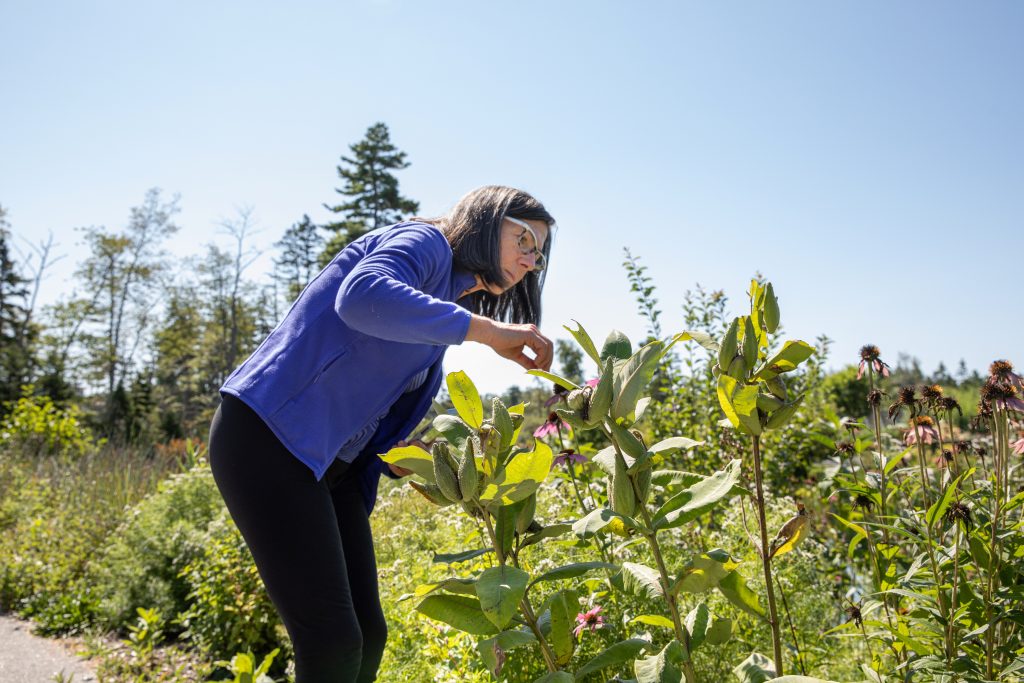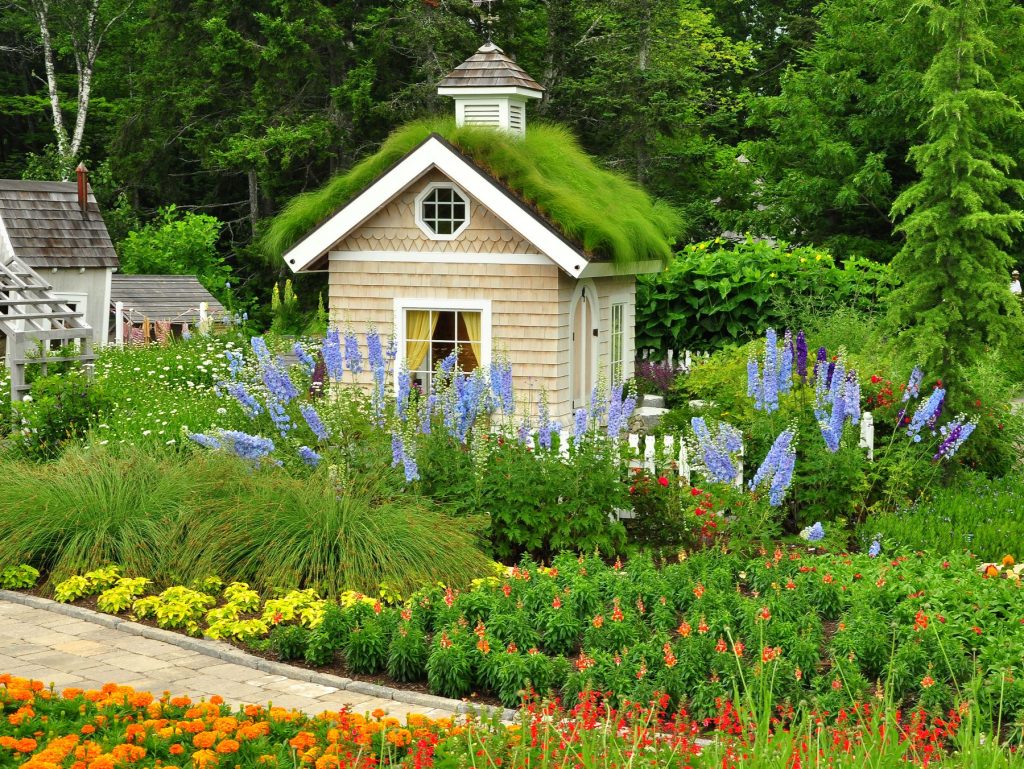When we think pollinators, we tend to picture the fuzzy yellow bees and brilliant orange butterflies that buzz and flitter around our gardens in the summer. These critters make up just a smidge of the important and complex world of pollinators within our ecosystems. Wasps, flies, beetles, ants, birds, and several small mammal species contribute to the vastly diverse and intricate world of pollinators.
Native Pollinators: Buzzworthy Business
Why are native pollinators important?
For a plant to set seed and make fruit, it must be pollinated. Plants are either wind-pollinated, like grasses and many trees, or animal-pollinated. Pollination allows plants to reproduce and spread their genetics, resulting in diverse traits which can help in the survivorship of the species. The more diverse the traits, the more likely adaptations will occur for plants to withstand extreme climatic events.
Native pollinators facilitate plant reproduction, and plants are the base of our trophic levels providing energy up the food chain. With over 300,000 species of flowering plant worldwide, pollinators are essential for sustaining most terrestrial food webs.
Co-evolution and the perfect pollinator
Native angiosperms (flowering plants) have co-evolved with pollinators for millions of years. In fact, the first record of insect pollination is from over 100 million years ago. As the number of flowering plant species increased on our planet, so too did the number of pollinator insects. As flowers contain the reproductive part of the plant, the shape of the flower and its mechanism for pollination is dictated by years of co-evolution with the creatures that pollinate it. Flowering plants have spent millions of years developing diverse strategies to attract pollinators in order to successfully spread their pollen. Specialized structures, scents, color spectrums, and mimicry are all employed by plants to make themselves more attractive to their pollinator cohorts.
One of my favorite pollination techniques comes from the mountain laurel, Kalmia latifolia. The cup shaped flowers have their anthers stuck into little pits at the base. This helps prevent the flower from losing pollen in storms or wind. When a bee lands within the flower, the weight of the bee springs the anthers loose, slapping the bee on the back with pollen. When the bee flies off to the next flower, it takes away plenty of pollen on its furry body, which is transferred to the next flower, and so on.
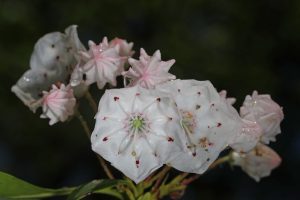
Not only do plants evolve special mechanisms for pollination, but most of our native bee species specialize on specific flowers and all have evolved structures and means by which they collect pollen. Most bees are covered in branched hairs allowing them to carry pollen. Some bees, like our native bumble bees, have specialized areas on their legs they are able to pack pollen into.
Native pollinators are the most adept at pollinating native plants, but many are also more adept at pollinating many of our crop plants too. The non-native honey bee, for example, is nowhere near as skilled at pollinating squashes, berries, and fruit trees as some of our native bees like squash bees and orchard bees (pictured below). Unfortunately, many of our native bee populations are in steep decline, forcing us to rely on honey bees to shoulder much of our food crop pollination.
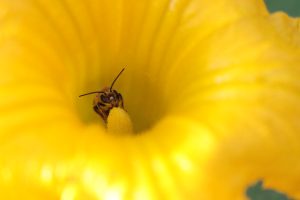
Focusing on one non-native pollinator as the savior to all our fruiting needs is a concerning and limited perspective. This perspective doesn’t take into account the millions of years of specialization through co-evolution between thousands of our richly diverse plant and insect species.
It’s Not Just Bees
It’s not just bees doing the bulk of the pollinator business. Flies, beetles, butterflies and moths, wasps, and many mammals take on this role as well. Meet the diverse cast of characters that fill the role of pollinator here in Maine:
Great golden digger wasp
This wasp, Sphex ichneumoneus, may look dangerous, but have no fear! She hunts grasshoppers to feed her larvae, so she needs to be big enough to carry them back to her nest in the ground. Look for this friendly giant in the summer months on her favorite flowers, swamp milkweed Asclepias incarnata and mountain mint Pycnanthemum spp.
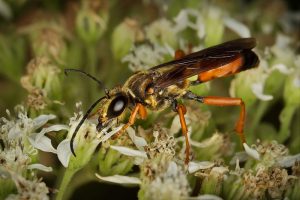
Beetles
Over 77,000 beetle species, like this banded longhorn beetle Typocerus velutinus on a magnolia flower, help pollinate flowers around the world. Beetles are the oldest known pollinators, forming symbiotic relationships with early flowering plants like magnolias and water lilies around 100 million years ago.
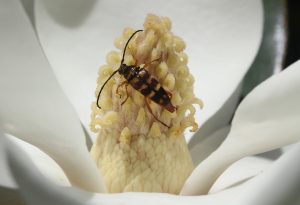
Bats
When the sun sets, bats help take over pollination duties. These beneficial mammals frequent night-blooming flowers, commonly fragrant or pale in color. While bat pollination is more common in more southern parts of the world, there are other ways bats help us here in Maine—they also eat thousands of flying insects like mosquitoes every night!
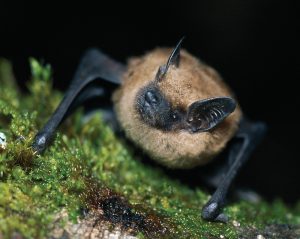
Birds
Nectar-loving birds like the hummingbird make excellent pollinators in Maine. Although they are most attracted to red and orange tubular flowers that match their beak shape, they will drink nectar from any flowers with the right sugar content.
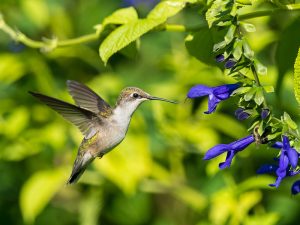
Hover or flower flies
Flies in the family Syrphidae are commonly known as hover flies or flower flies because they are often seen hovering above flowers. Many of them are bee mimics, masquerading as bees with their yellow and black striped bodies, protecting themselves from predators.
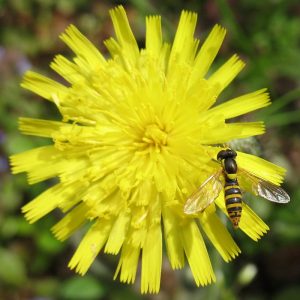
Ants
Ants like this reddish carpenter ant Camponotus castaneus can be helpful pollinators, especially for low-growing plants or those with small flowers that are hard to find or sit close to the stem. Ant-flower relationships are still being studied, however, with research showing that many ants secrete an antimicrobial fluid to prevent bacterial and fungal infections that incidentally also kills pollen grains.
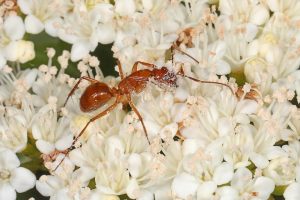
Slugs
Slugs may be some of our most surprising pollinators! While they eat the leaves and flowers, they may also help pollinate low-lying or smelly flowers like wild ginger and trilliums. Take a look at this slug on a trillium flower—it may be picking up and transferring pollen as it slides across the flower’s anthers.
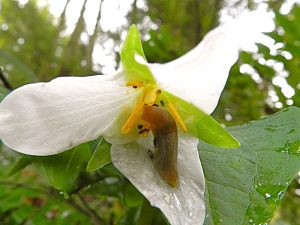
Plants that no longer attract pollinators
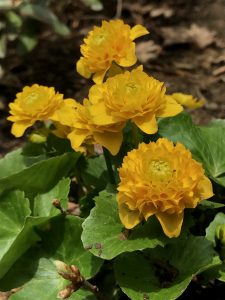
In cultivation, some plants have been bred or selected for specific traits that may serve a role aesthetically but also make them less attractive to pollinators. For example, several varieties of sunflower in cultivation do not produce pollen at all. This may have been useful for a florist making a bouquet for a bride who does not want pollen all over her dress, but this trait does nothing to support pollinators out in a field. In many double-flowering varieties of plants like this double-petalled marsh marigold, the reproductive organs of the flower have been converted to petals, making them sterile. Though these flowers may be visually attractive to us, they serve little value to wildlife and are not visited by pollinators.
Supporting native pollinators beyond the flowers
It is all well and good to have a garden full of flowering plants with pollen and nectar sources, but that’s only half the battle in promoting native pollinator diversity. Providing host plants for juvenile stages, over-wintering habitat, and nesting grounds are all additional ways to support pollinators. Many pollinators, including many species of bee, moth, butterfly, and mammals, require specific nesting and over-wintering grounds such as cavities of dead trees, stems of perennial plants, and leaf litter.
When talking about pollinators we must be aware of the complex lives they live beyond the flowers they visit. Many wasp species feed on nectar as adults, pollinating flowers, but as larvae they require an insect food source provided by the parent. Similarly, the hover fly is an important pollinator and visitor to flowers as an adult but feeds on aphids and other pest species as larvae.
The monarch butterfly—the poster child in the effort to protect native pollinators—is a great example of the complexities involved in saving just one species. It is well known that monarch butterfly caterpillars will only feed on Asclepias (milkweed) species. But simply providing a ton of milkweed is not enough to protect this migratory, multigenerational species. In addition to providing milkweed, we must protect the monarch’s overwintering trees. The last generation of the eastern population of monarchs travels down to Mexico in the fall to overwinter in the oyamel fir tree forests contained in a handful of mountainous areas. Without these forests, monarchs will not survive the winter to make their journey back north. But it doesn’t stop there. So let’s say we’ve protected the over-wintering habitat and provided a larval food source (which also provides a decent nectar source when the adults are laying their eggs on these plants). If the monarchs are expected to travel all the way from Maine and Canada (their northern range) to Mexico, they are going to need some serious fuel to get there. In October, when they head south, milkweed is no longer blooming (milkweeds generally bloom from June to August). That means we must also provide a high-energy nectar source that adult monarchs can use for their exhaustive flight. Late season flowering plants like asters and goldenrods are important nectar sources for monarchs needing to bulk up for their migratory passage.
In the end, maintaining pollinator populations is more than just planting flowers.
